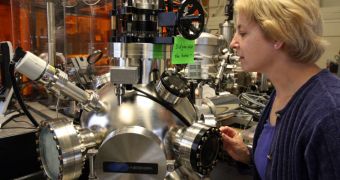A group of experts at the Massachusetts Institute of Technology (MIT) announces the development of a technique that allows optical signals to be processed directly through a circuit, rather than be converted to electrons, and then back into photons.
This achievement brings the goal of constructing an optical computer a lot closer to reality. One of the main objectives thus far has been the necessity for this photon-electron-photon conversion, which is both time- and resource-consuming,
What experts are trying to achieve is the ability to construct devices that carry out computational tasks by using photons rather than electrons. These instruments are called photonic chips, and they can set the foundation for a new generation of advanced computers.
Based on the new research, it may be possible for experts to soon start producing photonic chips of the same type of silicon that is used in nearly all electronics today. Optical systems are used even now, such as for example in optical fiber.
However, the data traveling through these fibers are converted to electronic form as soon as they enter computational circuits. After being processed, a laser is used to turn them back into light, so that they can be transmitted via optical fibers yet again.
By eliminating the extra electronic-conversion steps, the MIT group was able to develop a method whereby photons are processed and retransmitted directly. This is done through what expert Caroline Ross refers to as a “diode for light.”
The investigators – a coauthor of a paper appearing in the November 13 issue of the top journal Nature Photonics – holds an appointment as the Toyota professor of materials science and engineering at MIT.
What the new diode does is it creates a one-way street for photons, similarly to how it does for electrons. A signal can only pass through a diode in a single direction, and is blocked if it tries to travel back the way it came.
The device is made out of garnet, a material that is both magnetic and transparent. Both these traits were necessary for the diode to succeed, but these properties rarely occur together in nature.
What is amazing about this research is that it managed to create diodes for light that are capable of operating on conventional silicon wafers. This means that no significant change in technology and installed capabilities will have to accompany the change in basic operation principles.
“A silicon platform is what you want to use, [because] there’s a huge infrastructure for silicon processing. Everyone knows how to process silicon. That means they can set about developing the chip without having to worry about new fabrication techniques,” the Ross concludes.

 14 DAY TRIAL //
14 DAY TRIAL //